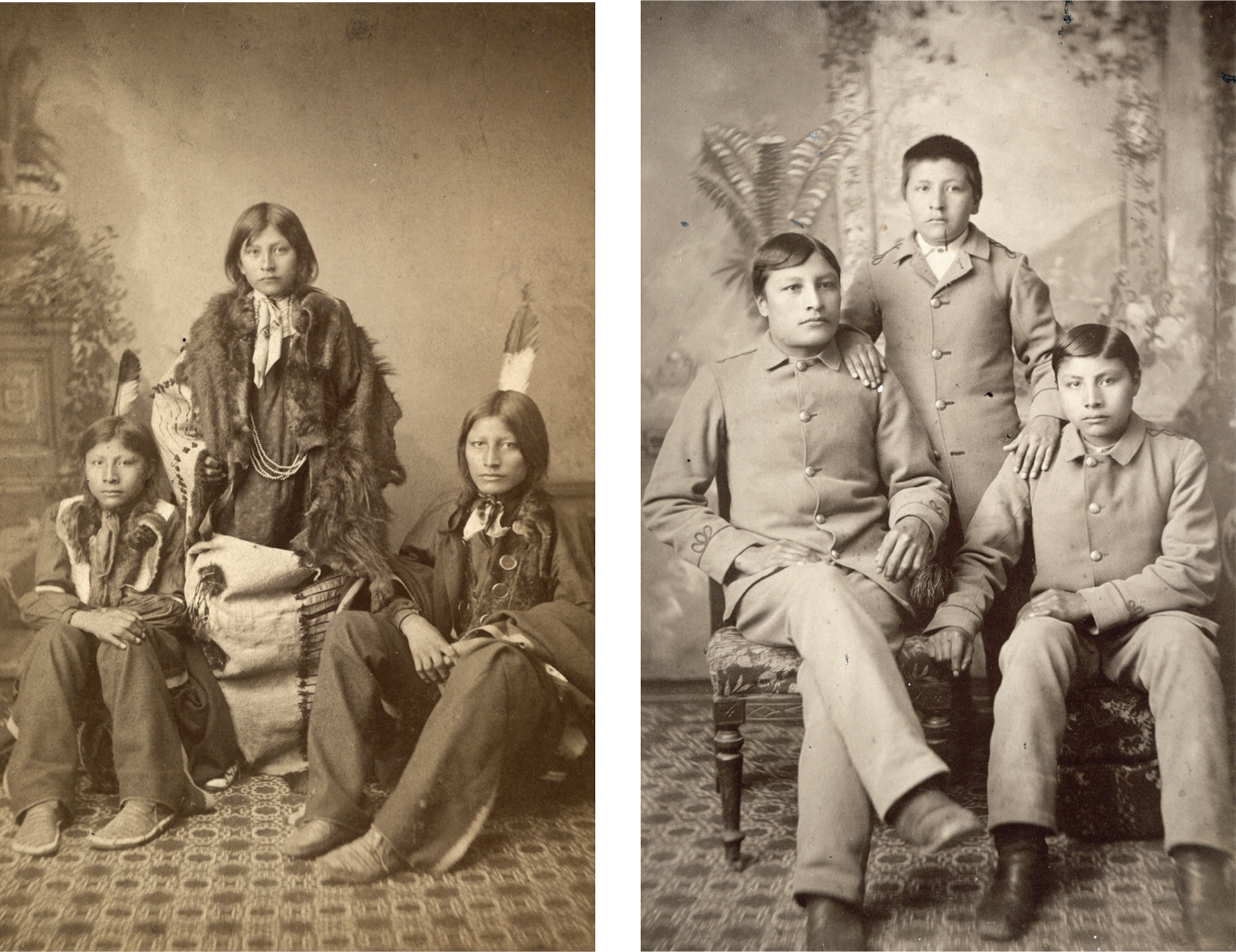Indian Schools and the War on Indian Culture
Indian schools constituted the cultural battleground of the Indian wars in the West, their avowed purpose being, in the words of one of its fervent supporters, “To kill the Indian . . .
Many Native American parents resisted sending their children away. When all else failed, the military kidnapped the children and sent them off to school. An agent at the Mescalero Apache Agency in Arizona Territory reported in 1886 that “it became necessary to visit the camps unexpectedly with a detachment of police, and seize such children as were proper and take them away to school, willing or unwilling.” The parents put up a struggle. “Some hurried their children off to the mountains or hid them away in camp, and the police had to chase and capture them like so many wild rabbits,” the agent observed. “This unusual proceeding created quite an outcry. The men were sullen and muttering, the women loud in their lamentations and the children almost out of their wits with fright.”
Once at school, the children were stripped and scrubbed, their clothing and belongings confiscated, and their hair hacked off and doused with kerosene to kill lice. Issued stiff new uniforms, shoes, and what Luther Standing Bear recalled as the “torture” of woolen long under-
The Carlisle Indian School in Pennsylvania, founded in 1879, became the model for later institutions. To encourage assimilation, Carlisle pioneered the “outing system”—sending students to live with white families during summer vacations. The policy reflected the school’s slogan: “To civilize the Indian, get him into civilization. To keep him civilized, let him stay.” The curriculum featured agricultural and manual arts for boys and domestic skills for girls, training designed to eliminate Indians’ dependence on government support.

Merrill Gates, a member of the Board of Indian Commissioners, summed up the goal of Indian education: “To get the Indian out of the blanket and into trousers,—and trousers with a pocket in them, and with a pocket that aches to be filled with dollars!” Gates’s faith in the “civilizing” power of the dollar reflected the unabashed materialism of the age. But the cultural annihilation that Gates cheerfully predicted did not prove so easy.
Despite whites’ efforts, Indians continued being Indians. Even in the “iron routine” of the “civilizing machine” at boarding school, Zitkala-